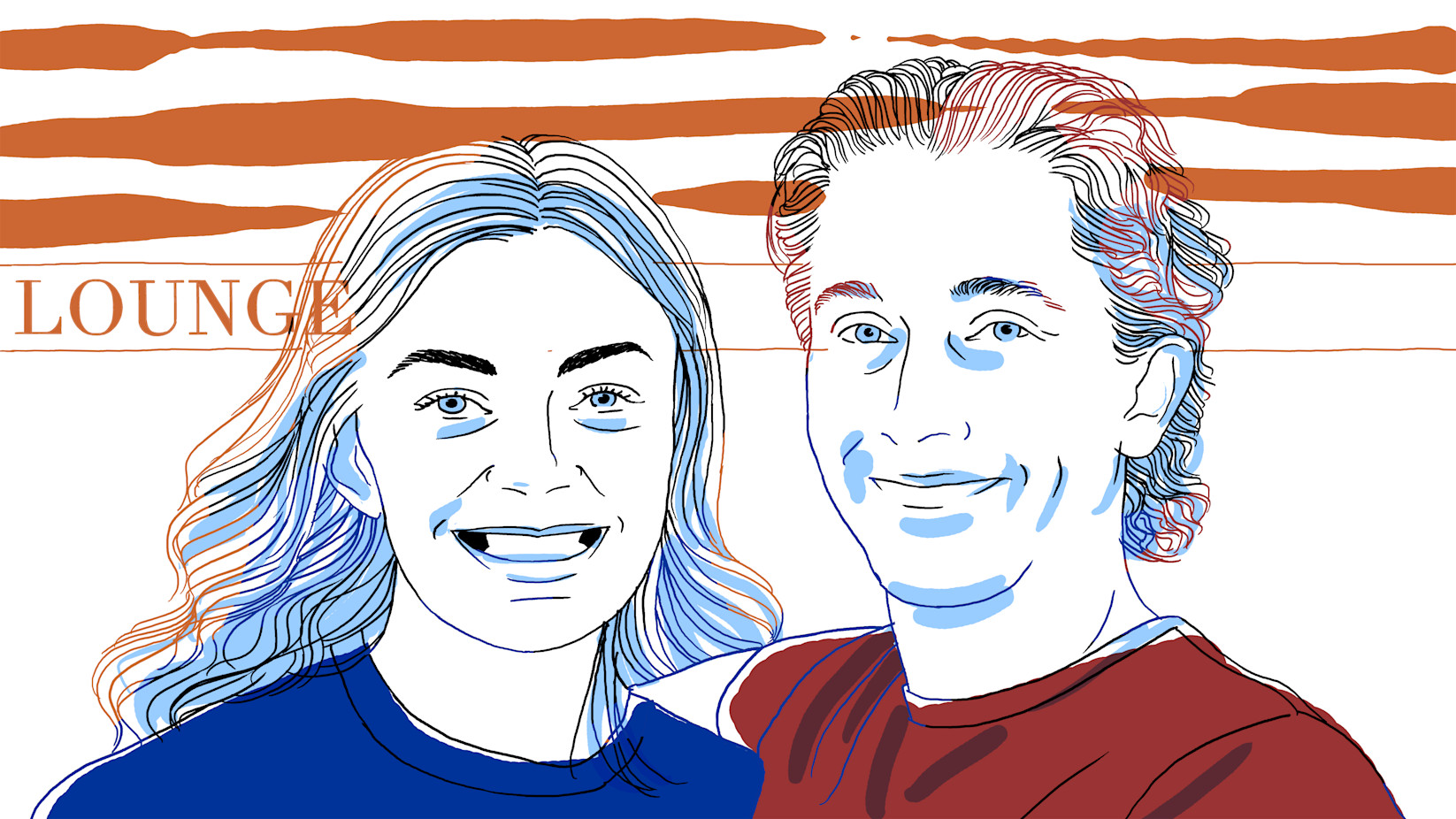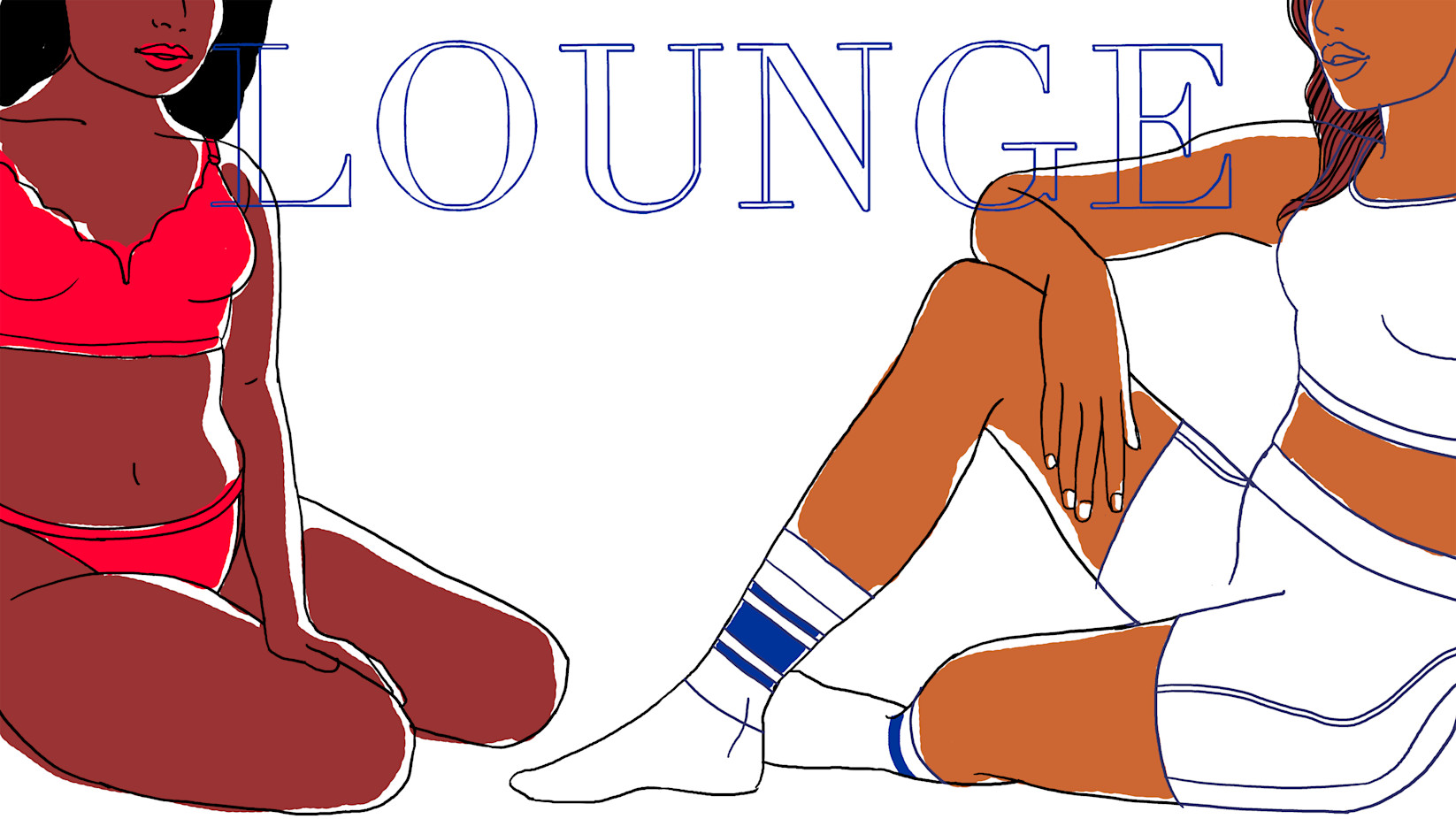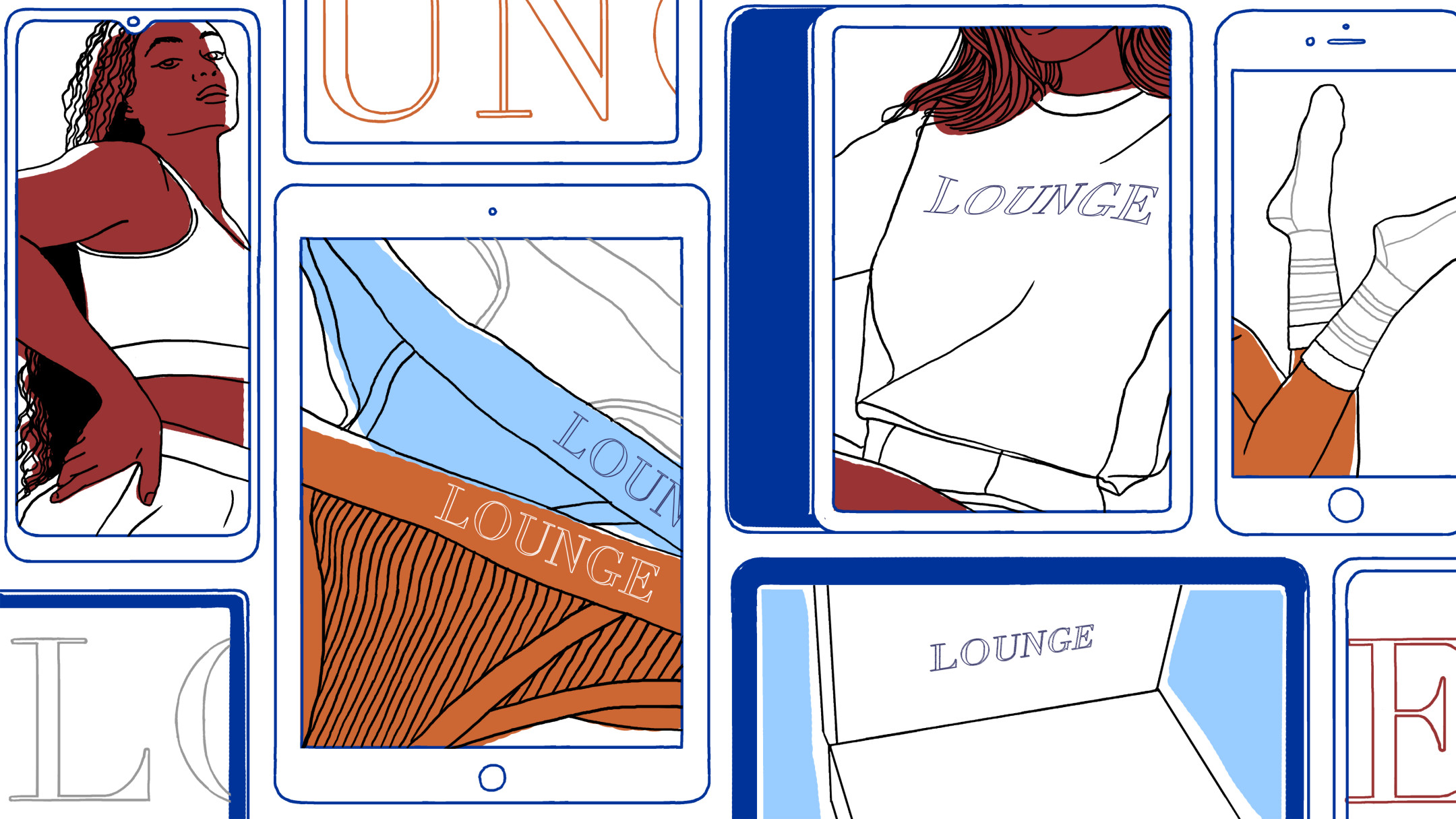It won’t take you long on Instagram to find women by the hundreds of thousands celebrating their bodies. During a cursory search, one can find many captions, hashtags, and loud proclamations all around the central idea that there is no “singular” aspirational body. Cellulite, hip dips, tummy rolls, disabled bodies, and fat bodies—all of these are at once normal and beautiful.
The social platform, for all of the valid criticisms levied against it as a place where aspirations become obsessions—that a life not picture ready isn’t a life worth living at all—does, in fact, have communities of people who come together to support one another’s journeys to self-acceptance. This expression of confidence has become aspirational. Body positivity as a movement isn’t without its thorns but, peeling away to a base goal of accepting non-thin, idealized bodies is a nudge in the right direction for women everywhere to stop feeling the misogynistic sting that their bodies are less than.
Few brands held such a rigorous hold over what the desired body ought to be quite like Victoria’s Secret, who long promoted in their underwear and lingerie products thin, tanned bodies that were curved, muscular in the right places. It was defeating, trying to measure up to a body that so many can never attain. The narratives from lingerie, underwear, and bra brands for women have all but wrung us out.
Sometimes—most times—bodies not deemed perfect have become invisible, forgotten.
Yet, as these dated ideas on womanhood and the male gaze started to fall out of fashion, conditions ripened for the British underwear brand, Lounge, to make a splash—making an important impact on how such products can be marketed going forward. Lounge brings together the idea that comfort and desire go together harmoniously. Founders Melanie and Dan Marsden brought their brand (funded on only £1000 at its beginning) into a world ready for change. And the world welcomed them back.
In the U.K., according to Statista, the lingerie and underwear industry is expected to make over six billion dollars USD by 2025, while the U.S. alone is forecasted to almost double that in the same period to $11 billion. Global in its reach, expanding out of it’s U.K. base to America and Europe, Lounge is positioned to, perhaps, become the most important underwear brand for the next generation. Lounge has grown to $70 million in revenue and, once a two-person operation, now employs 150 people. The brand has over 2.5 million followers on Instagram and 751,000 followers on TikTok—their reach is immense. Lounge is digitally-focused, transparent, and concerned with speaking to its customers directly.
Women are no longer subjecting themselves to the scrutinies past mainstream brands have made them endure. Rather than position themselves as the direct competition, Lounge is instead an option. By choosing Lounge, it’s the intentional position that comfort and sensuality are priorities that any body deserves to feel.
Starting a brand in your parents’ living room
“I guess every woman goes on a journey in terms of [the] relationship with their body,” Melanie Marsden, Lounge's co-founder and chief brand officer, says over a video call from Lounge’s Midland’s offices. “I think Lounge,” she continues “essentially allowed me to sit back and look at what's going on in the industry and channel my focus into how I make other young women growing up have a different experience to what I did.”
Lounge began as a slow burn. Marsden has worked in media and entrepreneurship, the latter with her partner, Dan. It wasn’t the first enterprise for the young couple (who have been together since they were teenagers!) “As I was coming out of university, we had a small fashion boutique together that was doing really well. It was ahead of the curve with its marketing and was beginning to grow. [But] we kind of sat back and said, ‘Look, this boutique’s awesome but it's not our product, is it?’”
Both Marsdens, in their 20s at the time, wanted to create something recognizable, immediately apparent to buyers that they’d be investing in both a brand and its products. “The early conversations about Lounge were around how we can create a product that's really easy to brand. As soon as people see it, they know who we are, and then we can build a business from that.”
In 2015, Lounge was born.
At first, Melanie and Dan worked out of her parents’ home, still splitting her time between working a full-time media job and the business. (Six months after the launch, Melanie left her day job to pursue the brand full-time with Dan.) In the earliest days, boxes and products littered a room of Melanie’s parents’ home, soon becoming more than the space could handle. “We kind of outgrew that space and asked them kindly if we can take over the living room,” Marsden says, laughing a little, “And it was still growing fast in the living room with containers. We had to [put it] into my bedroom and we had boxes of stuff to move off the bed at night.“

It’s hard for Marsden to pinpoint a precise moment when she felt the shift of this business into something with momentum. The website launch was, she says, memorable. They used to get emails on their phones for every single sale. When it was a few orders a day, that was a manageable amount of notifications. “I remember when it started to get to a point where we were getting ten and then 20 orders a day. I remember having a conversation that when we get 100 a day, should we turn these emails off now because we constantly get them?” (Spoiler: they would.)
During the first couple of years, Melanie and Dan moved the brand several times to accommodate the uptick in demand. A unit that was comprised of two people, with help from family and friends wherever they could lend a hand, was no longer sustainable. “When we moved into the warehouse after we left my mom and dad’s place, the business was now paying rent. It was the two of us in this space,” Marsden says. “[Soon], we were interviewing for staff, and that was the most nerve-wracking thing ever. Whereas now, there are so many of us that we lead a group of amazing talent with lighter moments. It's just been a completely crazy, whirlwind journey.”
Inclusivity and body positivity as necessities, not buzzwords
Lounge’s association with empowerment and female solidarity, and body positivity when that entered public discourse more regularly, happened later. “In those days of building out the brand structure, we were focusing on products that would be easy goals we could essentially build a business off of. That concept of a female family, and empowering women, trying to change the industry, driving a new direction for women, has actually really spiraled as the business has grown. We've kind of been on this crazy journey.”
As a woman in this modern, digital world, Marsden continues, certain pangs are deeply felt. “Social [media] is literally in our hands every day. We're subjected to so many different things—whether it be talking about your body, your mental health, about anything that happens in your life.”
So Lounge has, in part because of the way we’re bombarded each day with filtered, edited, and idealized images through social media decided to veer away from industry standards and not edit their photos. In an interview last year, Marsden said, “Ensuring that we show our models' natural bodies, shapes, blemishes, and stretch marks is crucial to ensuring our community feels proud of who they are when they browse around our website. These are natural features we all have, so it’s mad to me that the industry has historically, and for some – still does, feel like it needs to hide these natural distinguishes that make us and our bodies human.”
Now, with the categorization of Lounge as one of the more body-positive and inclusive brands does it, or Marsden specifically, feel the pressure of being boxed in by such definitions?
“There’s a lot of buzzwords that get thrown around in the press and from brands as well. I wouldn't say it puts us in a box. I think our goal is to smash through that ceiling and take those topics that everyone is so fanatic about to give them actual meaning and authenticity,” Marsden says. “So don't just say, ‘oh, we're going to empower our female family to love themselves today.’ Actually drive the change, build the relationships, you know, and communicate with the customers. Listen and take the feedback.”
Lounge’s campaigns—never seasonal, always drops that interest the team—and social presence are so clearly targeted toward embracing that women’s bodies do come in different sizes, shapes, and skin colors. It isn’t a homogenous assertion of whiteness. The projection of desire is ever-present in such a category—it’s difficult to totally untether a near-century of a male-constructed sensuality—but the gaze does feel different at Lounge. This plainly told confidence is important.
“Something that I've never really realized that I'm doing is I'm essentially hiding behind the brand to use my own voice to tell the stories of what I've struggled with or I find tough,” she says. Marsden has become more comfortable with, I suppose in a parallel way to how other women find and possess their own sense of narrative, her stories, her ideas, and herself centered with and in the brand. Becoming a mother, she admits, helped navigate a new part of that story for her, thinking about how Lounge’s audience may shift in time, and what stories it can tell to a younger generation.
“I’ve got a little girl. She's [nearly ten months.] So I guess to me... our audience is always going to grow old with us, but they're going to get younger too,” she says, “I've got to make sure that I have all the best people around me in terms of those youthful women that are experiencing what they're experiencing as teenagers and moving into their 20s. And as I'm reaching my 30s, I am making sure that the brand can align with that age of women in our audience.”
Influencer marketing pioneers
A significant part of Lounge’s success can be attributed to how easily and ardently the brand embraced influencers as early marketers. In 2015, influencers weren’t a viable marketing pathway, or even career option for the content creator crowd, as they are today. But Lounge, and maybe this is due to the parallel rise of ecommerce and social media and the convergence of social commerce, managed to see an opportunity that others didn’t—or perhaps wouldn’t.
“When we launched the website, we had a few influencers that we had gifted the product to. This was in the super early days of the influencer marketplace and not having to pay necessarily for promotion—the product was payment,” Marsden explains. “We had a couple of girls post, and we instantly had a sale. We were sat by the fireplace at my mum and dad's house [watching it happen.]”
Marsden is direct about how good Lounge’s influencer strategies are: “I would say we are one of the very few brands that do influencer marketing very well. It has definitely been key to our base, but we also adapt and pivot really quickly in terms of what our strategy is, to keep competitors guessing.”
But more than embracing digital technologies, the human element is by far the most important. Consistency, a human relationship, and personally explaining the brand to influencers early on contributed to the success they seem to have in these strategies—and retaining influencers. In an interview, Marden explained that “even now some of the girls that we worked with right at the beginning of our journey, they feel so deeply rooted and connected to what our values are now. The relationship is just so authentic and that promoting our products just comes naturally to them because they actually love the product. And I guess making sure that that relationship was built right from the foundations through to where we are now, it was really important.”

Building a digital-first community
Now, in 2021, and even thinking toward 2022 and beyond, Marsden says the nimbleness of the brand early on through digital-first technology adoption, seeing these platforms and the people on them as legitimate avenues for commerce, makes their future plans a lot easier to formulate. “We're always changing it and making sure that we don’t remain so fragile in terms of our approach to influencers,” she says, “Plus the influencer landscape changes so rapidly,” citing that TikTok wasn’t the social behemoth it is right now even a year ago.
Each social media platform serves a different purpose but all work toward the same goal of maintaining and adding to Lounge’s community. If you’re a Lounge buyer who has sent a direct message to the brand and received a response, there’s a chance that it was Melanie Marsden on the other end answering your question or listening to your story.
“I do think our community is so tight,” Marsden explains, “Again, community is one of those buzzwords that gets thrown around as a brand. But I still go into the DMs personally most days to actually connect with those people. They don't know they're talking to me, but I just like to make sure that I can actually experience what's going on.”
When brands begin so DIY, it is easy to connect more thoroughly. With Lounge’s immense success, Marsden won’t hide away from her buyer and instead meet them literally where they are at to understand real-time issues and their needs. Lounge’s competitors are likely only edging toward this kind of connection as a new venture, not one that’s part of the foundation.
Marsden credits this to the early days of Lounge when, like most entrepreneurs, she and her husband Dan had to wear all the hats all at once. She admittedly loves that, being in the thick of the minute details of the business, which have, of course, had to go by the wayside as the business grew and grew, pushing her toward delegation. But Lounge wouldn’t be Lounge if she simply stopped participating in this one part of the business.
“The competitors [who] maybe didn't run their businesses how we do—involved and ingrained in some of those smaller details... some people would say it is a flaw like you need to step out of that, you need to think big,” Marsden says, “I still think big. I'm working day and night in terms of what we're doing in 2023. But I think if I ever lost touch with literally what's going on [in social media]... I just can't imagine it. I don't think the business would run as it does if I wasn't in there.”
How to scale globally without sacrificing brand ethos
The question Marsden always fields is what’s next? It’s understandable that people—both consumers or business publications—want to know what the U.K. underwear brand has planned for the future. Lounge experienced exponential growth during the pandemic, like many other direct-to-consumer, ecommerce-focused brands. With the pandemic activity built right into the name of their brand, Lounge was a too-perfect fit for what buyers needed at the time.
Still, Lounge is connected so firmly to its original strategy and practice that anything coming next is completely driven by how the brand began.
“I think those humble beginnings are so powerful in terms of what we drive into our team. They essentially take what we learn and drive it into other departments of business,” Marsden says, “The way things connect… I think obviously it would be wrong of me to say we don't look at what's going on in the market because we need to see who else our customer may be shopping with or maybe looking to shop with. But I can confidently say our strategy comes from doing what we want to do. If [buyers] don't react super quick, we won't do it again.”
More practically on the horizon, Lounge is tinkering with the idea of what in-person events look like. It’s not exactly retail, as so many brands these days are blurring the lines of what commerce can be like in person. It is experiential in nature, tuned into the emotional experiences that such a space can provide, and not simply exist to sell the product physically.
But what really is next is a complicated answer but with a clear direction: Become the biggest brand in the world.
“That phrase kind of spun around a few times, and means different things to different people in the business. Like, being the biggest in terms of market share and those competitors,” Marsden explains.
But for her, becoming the biggest underwear brand in the world isn’t necessarily notoriety or revenue volume. Those matter, sure, but it’s maintaining those community roots. Still being a women for women company, expanding what inclusivity means and looks like, representing women and people who don’t necessarily feel that representation day-to-day.
Marsden concludes: “Being the biggest is more built-in with the meaning we put into the brand in a way that connects with people. So, it isn’t always having the biggest voice and with the most meaning but driving real change—not just talking about it, actually doing it.”






